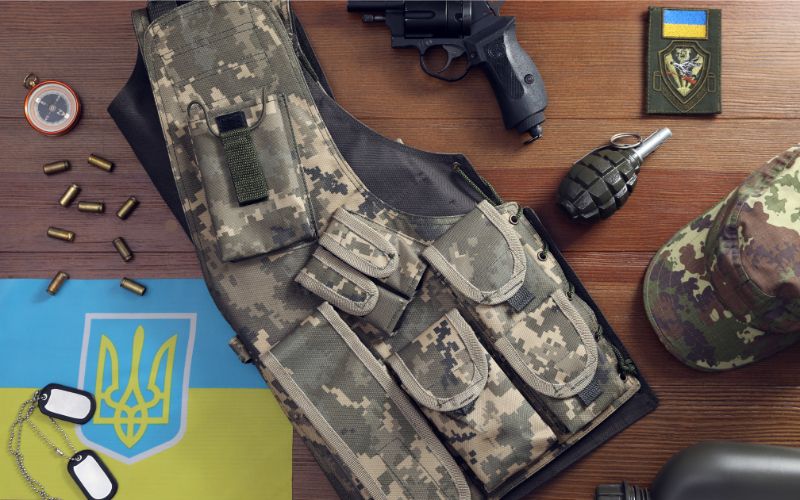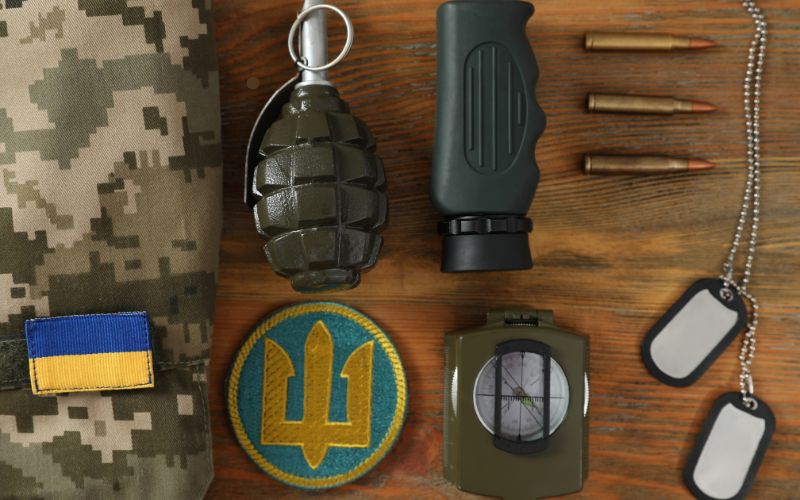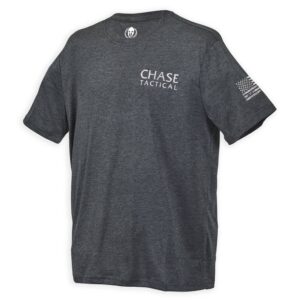How Modern Military Forces Use Tactical Gear In Operations

Tactical gear has evolved significantly over the years, adapting to the changing demands of modern warfare. Today, military forces across the globe rely on an array of specialized equipment designed to enhance operational efficiency, protect soldiers, and ensure mission success. Today’s article delves into the critical role that tactical gear plays in modern military operations, exploring its components, applications, and the technological advancements shaping warfare’s future.
The Evolution Of Tactical Gear

Tactical gear is not new; it has been integral to military operations for centuries. From the armor worn by ancient warriors to the advanced body armor used today, the primary goal has always been to protect while enabling mobility. However, the modern battlefield’s complexities have necessitated the development of more sophisticated gear, incorporating cutting-edge technology and materials.
In the past, military gear was primarily focused on providing physical protection and basic survival tools. Today, however, tactical gear encompasses a wide range of equipment designed to support various aspects of military operations, including communication, navigation, surveillance, and even psychological warfare. The evolution of tactical gear reflects the changing nature of warfare, where information dominance, speed, and adaptability are as crucial as firepower.
Essential Components Of Modern Tactical Gear
Modern tactical gear is a comprehensive system comprising various components, each serving a specific purpose. Here are some of the most critical elements:
1. Body Armor and Ballistic Protection
One of the most vital components of tactical gear is body armor. Modern LOPC body armor active shooter kits are designed to protect soldiers from ballistic threats, including bullets, shrapnel, and explosive fragments. Today’s body armor is made from advanced materials like Kevlar, Dyneema, and ceramic plates, which provide high levels of self-protection while remaining lightweight and flexible. This allows soldiers to move freely and engage in combat without being encumbered by heavy armor.
2. Tactical Helmets
Tactical helmets are another crucial element of military gear, providing head protection from ballistic and blunt force trauma. Modern helmets have advanced features like night vision mounts, communication systems, and modular attachment points for additional gear like cameras or lights. Integrating these features into the tactical helmet design enhances situational awareness and allows soldiers to operate effectively in various environments.
3. Load-Bearing Equipment (LBE)
Load-bearing equipment, including tactical vests, belts, and tactical backpacks, is essential for carrying ammunition, medical supplies, communication devices, and other mission-critical items. These systems are designed to distribute weight evenly across the body, reducing fatigue and improving mobility. Modern LBE systems are often modular, allowing soldiers to customize their gear based on the mission requirements.
4. Tactical Footwear
Footwear plays a significant role in a soldier’s ability to perform in the field. Tactical footwear is engineered to deliver superior comfort, support, and protection across diverse terrains and weather conditions. These boots are constructed from robust materials and offer water, puncture, abrasion resistance, exceptional traction, and stability.
5. Weapons and Accessories
Soldiers’ effectiveness in combat depends heavily on the weapons and accessories they carry. Modern tactical gear includes a variety of firearms, from rifles and pistols to specialized weapons like sniper rifles and shotguns. In addition to firearms, soldiers often carry accessories such as scopes, suppressors, laser sights, and tactical flashlights, all enhancing their combat effectiveness.
6. Communication Devices
Effective communication is vital in any military operation. Modern tactical gear includes advanced communication radio devices with pouches that allow soldiers to stay connected with their team members and command centers. These devices often feature secure encryption, noise-canceling technology, and long-range capabilities, ensuring clear communication even in the most challenging environments.
7. Night Vision and Thermal Imaging Equipment
Operating effectively in low-light or no-light conditions can be a decisive advantage in modern warfare. Night vision goggles and thermal imaging devices are essential components of tactical gear, allowing soldiers to see in the dark and detect heat signatures. These tools are invaluable for reconnaissance, surveillance, and targeting in limited visibility.
8. Navigation and GPS Systems
Accurate navigation is critical in military operations, where soldiers often operate in unfamiliar or hostile terrain. Modern tactical gear includes advanced GPS and navigation systems that provide real-time positioning data, maps, and route planning. These systems help soldiers avoid dangerous areas, reach objectives efficiently, and coordinate movements with other units.
How Tactical Gear Enhances Operational Effectiveness

Tactical gear is not just about protection; it’s about enhancing a soldier’s overall operational effectiveness. Here’s how:
1. Increased Mobility and Flexibility
Modern tactical gear is designed with mobility in mind. Lightweight materials and ergonomic designs allow soldiers to move quickly and efficiently, whether engaging in close-quarters combat or traversing rough terrain. The modular nature of modern gear also will enable soldiers to adapt their loadout to the specific demands of the mission, ensuring they carry only what they need.
2. Improved Situational Awareness
Situational awareness is critical in military operations, where the ability to perceive and respond to different threats can mean the difference between life and death. Tactical gear enhances situational awareness by providing soldiers with tools like night vision goggles, thermal imaging devices, and advanced communication systems. These tools allow soldiers to detect threats, coordinate with their teams, and make real-time informed decisions.
3. Enhanced Communication and Coordination
Effective communication is essential for coordinating movements, sharing intelligence, and executing complex operations. Modern tactical gear includes advanced communication devices that allow soldiers to maintain contact with their team members and command centers, even in challenging environments. This makes sure that everyone understands the same thing, which reduces the chances of misunderstandings and helps make our goals more successful.
4. Protection from Environmental Hazards
Modern tactical gear protects from ballistic and environmental hazards, such as extreme temperatures, moisture, and chemical agents. Specialized clothing, masks, and protective gear allow soldiers to operate in harsh environments without compromising their safety or performance.
5. Psychological Advantage
Tactical gear can also provide a psychological advantage for soldiers and their adversaries. The soldier’s sense of protection and preparedness from wearing high-quality gear can boost confidence and morale. For the adversary, seeing a well-equipped and heavily armed soldier can be intimidating, potentially discouraging resistance.
Technological Advancements Shaping The Future Of Tactical Gear
Rapid advancements in technology are shaping the future of tactical gear, opening up new possibilities for enhancing soldier performance and safety. Here are some of the most exciting developments:
1. Smart Textiles and Wearable Technology
Smart textiles and wearable technology are revolutionizing how soldiers interact with their gear. These innovations include clothing embedded with sensors that monitor vital signs, detect injuries, and provide real-time health data to medics and commanders. Wearable devices such as exoskeletons are also being developed to enhance soldiers’ strength and endurance, allowing them to carry heavier loads and perform at higher levels for extended periods.
2. Augmented Reality (AR) and Heads-Up Displays (HUDs)
Augmented reality and heads-up displays transform how soldiers perceive and interact with their environment. AR glasses and HUDs can provide soldiers with real-time information overlays, such as maps, target data, and mission objectives, directly in their field of view. This technology enhances situational awareness and allows soldiers to process information more quickly and accurately.
3. Drones and Unmanned Systems
Drones and unmanned systems are increasingly integrated into military operations, providing soldiers with enhanced reconnaissance, surveillance, and combat capabilities. Tactical tools now include systems that allow soldiers to control drones and unmanned vehicles, giving them a significant advantage in gathering intelligence and engaging targets from a distance.
4. Advanced Materials and 3D Printing
Developing advanced materials like graphene and nanomaterials creates lighter, stronger, and more flexible tactical gear. These materials offer improved protection without compromising mobility. Additionally, 3D printing technology is used to produce custom gear and components on demand, allowing for greater flexibility and adaptability in the field.
The Importance Of Proper Training And Maintenance
While advanced tactical gear offers numerous advantages, its effectiveness ultimately depends on how well it is used and maintained. Proper training is essential to ensure that soldiers are familiar with their equipment and can use it effectively under pressure. Regular maintenance and inspections of tactical tools are also crucial to ensure that the gear remains in optimal condition and functions as intended during operations.
Conclusion
Tactical gear is critical to modern military operations, providing soldiers with the tools to succeed in various environments and situations. As technology advances, tactical gear’s capabilities will only expand, offering new ways to enhance soldier performance, safety, and mission success. However, it is essential to remember that the effectiveness of tactical gear relies not just on its design and technology but also on the training, discipline, and adaptability of the soldiers who use it.


